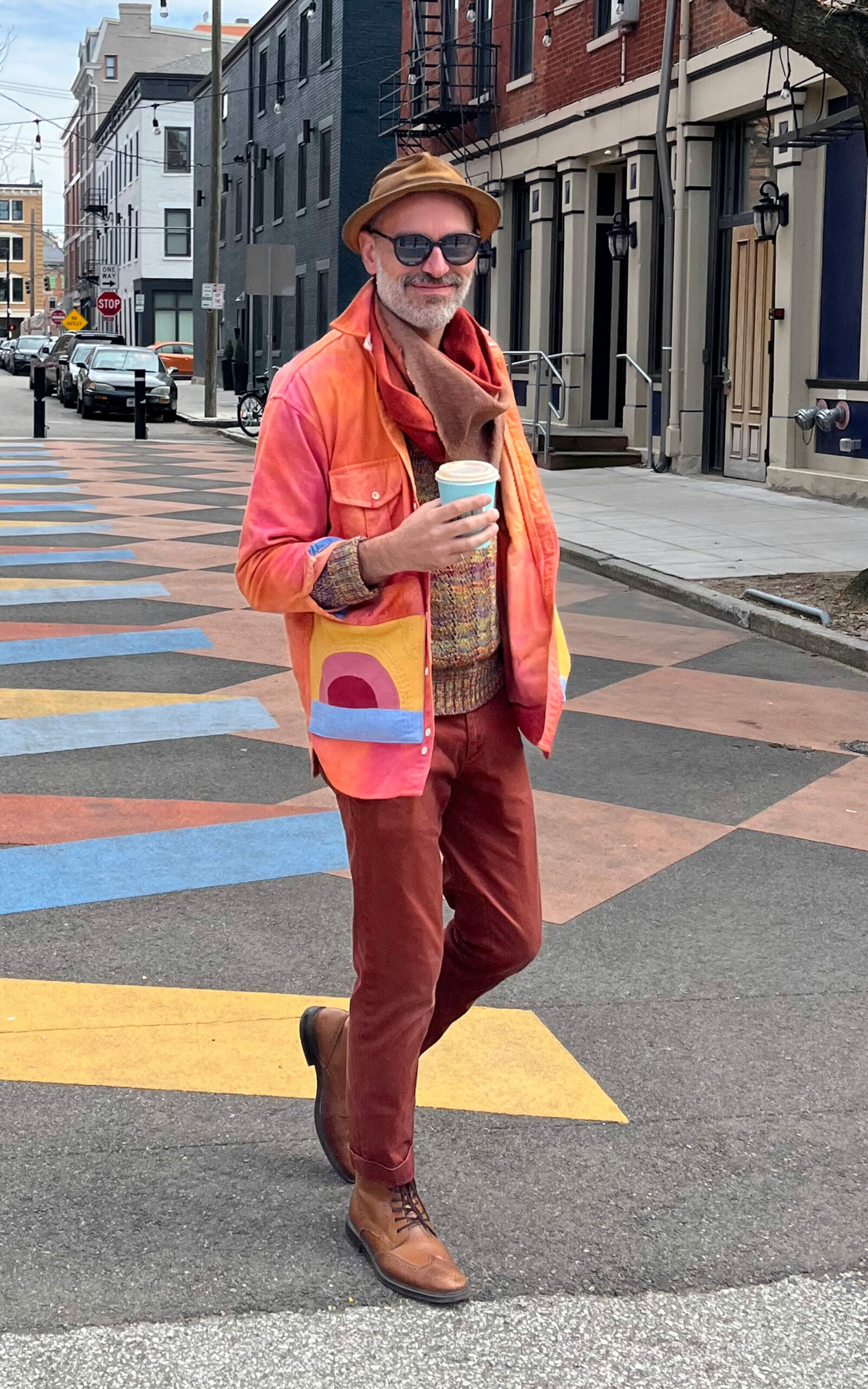Photo art by TADLOCKA
There are roughly eight billion people on this planet, each with a varying wardrobe of clothes. And every year, countless people are purging their closets to make room for new pieces to add to their collections. Even if people aren’t swapping their wardrobes each year, people buy more and more new clothes. Eventually, these articles of clothing end up in a donation bin or landfill.
It comes as no surprise that textile waste stemming from those nearly eight billion humans is quickly beginning to add up — 92 million tons of textile waste a year, to be exact. Scientists and environmentalists are urging both the fashion industry and the consumer market to rethink their buying and production habits. Large brands are slowly beginning to change, but they have yet to successfully shift to a robust, sustainable model for every single piece that leaves their warehouses.
This is not the case for Pittsburgh-based fashion artists Rona Chang and Rebekah Joy. Rona and Rebekah were both deeply affected by the detriment of the fashion industry on the environment — and they decided that it was time to do something about it.
RONA CHANG, A PITTSBURGH RESIDENT SINCE 2014, IS THE LEAD FASHION DESIGNER FOR HER BRAND, OTTO FINN.

When Rona was eight-years-old, she would make her own handcrafted clothes by cutting up old garments and fringes from bedsheets. Her childhood interest carried into adulthood when she used her sewing skills to patch up her son’s clothing — one of the primary reasons why Rona wanted to make a sustainable clothing brand. When her son was younger, she could have bought him new articles of clothing, or even crafted new pieces herself from store-bought fabrics, but Rona opted not to. Despite the ease that comes with buying store-bought clothing, she knew dressing her son in reused clothing would reduce her overall clothing intake. Rona emphatically said she doesn’t want her kids burdened with waste that will be unwillingly passed down to them from this generation. With this revelation, her clothing brand Otto Finn was born. The Otto Finn fashion studio is located in downtown Pittsburgh, in the thriving neighborhood of Lawrenceville.
The sustainable brand has a commitment to using minimal waste in creating their one-of-a-kind pieces. Rona derives inspiration for her pieces from her days as a professional photographer at the Metropolitan Museum of Art in New York City.
Rona worked in the Department of Asian Art and was tasked with photographing Indian miniature paintings and Japanese woodblock prints. These two collections were undeniably a direct influence on the artistic fashion pieces that Rona creates now. For example, Rona creates handcrafted jackets using a unique material: kantha — a type of quilt native to the Bengal region in India. Rona was drawn to these specific blankets not only for their unique beauty, but because they are created in a unique way.
American quilts are typically made using batting, which is a layer of insulation between the quilt top and the back of the quilt. Instead, kanthas are layers of fabric that are sewn together with a special running stitch. This layering of fabric allows kanthas to retain their unique beauty even if they become damaged or frayed. Rona explained that by the time the kanthas are coming to her, they are telling their third life story, and when she uses them, they can start a new chapter of life with a new owner. Being a small business owner does not come without its hardships. Sourcing sustainable materials remains a constant hurdle for Rona to overcome. There are only a handful of sustainable manufacturers in India that export kanthas, and due to the small scale of her business, the range of access is smaller for a brand like Otto Finn. Despite these obstacles, Rona remains resolute in her goal to produce sustainable fashion and hopes to one day improve her reach and even have storefront property.

REBEKAH JOY HAS TRAVELED THE WORLD, BUT THE WESTMORELAND COUNTY NATIVE RETURNED TO THE STEEL CITY TO OPEN HER OWN ART STUDIO, FLUX BENE, “A ZERO-WASTE, ETHICAL SLOW-FASHION LABEL.”

In 2013, Rebekah started a custom sewing business called HoneyShow which specialized in commissioned pieces. She created custom pieces while also hemming hundreds of bridesmaids dresses and even a few kilts! During this time, Rebekah found that upcycling was her true passion, and in 2017, she founded Flux Bene.
Despite now being a successful textile artist, Rebekah did not always see herself in this field of work. After receiving her Bachelors of Arts from the University of Pittsburgh, she found herself wondering what she wanted to do with her degree. In 2012, she took to sewing as a hobby and took classes at Cut and Sew Studio in the city.
But it wasn’t until catastrophe hit that Rebekah delved deeper into the fashion world.
On April 24, 2013, an eight-story building that housed five garment factories, the Rana Plaza, collapsed in the Dhaka District of Bangladesh.
It is considered the deadliest accidental structural failure in the modern age, and the deadliest garment-factory disaster in human history. The death toll was 1,134. Seeing this tragedy on the news was a wake-up call for Rebekah.
She knew she wanted to change the fast fashion industry. Rebekah believes that if we can slow down production, then there will be fewer abuses of employees and a better quality of clothing, which in turn expands the lifespan of garments. With these ideals in mind, she opened her own studio on the North Shore of Pittsburgh.
Rebekah named her studio Flux Bene after bringing two important pieces together. Flux, from German, roughly translates to positive change, and Bene comes from the name of a favorite café during her time abroad in Germany.
Rebekah makes custom clothing fashioned from recycled material. Rebekah sources her clothes from thrift stores, and she also seeks out pallets of clothing that stores did not sell and are about to be sent to landfills. Rebekah will also bulk order on eBay and look for garments that have scuffs, stains and rips because she knows the average consumer won’t buy them. In fact, she loves revitalizing imperfect clothing and transforming pieces into something new that someone else will get excited about.
Rebekah derives inspiration from many Pittsburgh staples. She spends many weekends visiting museums such as the Mattress Factory and the Carnegie Museum of Art and History. She also spends her time at the Carnegie Library, pulling inspiration from the countless fashion volumes contained in the historic collection.

It is also hard for Rebekah not to be inspired by the countless turn-of-the-century Rust Belt brick buildings that comprise the historic streets of Pittsburgh. Rebekah finds great joy in the strides that Pittsburgh has made to undo the damaging effects that came with its industrial past and finds inspiration in how nature and industry have intersected.

